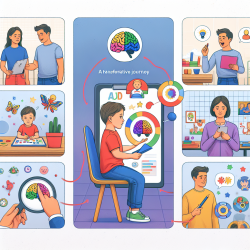Introduction
In the realm of public health and social protection, cash transfers have emerged as a pivotal strategy to mitigate poverty and enhance well-being. The study titled "Cash transfers for HIV prevention: what do young women spend it on? Mixed methods findings from HPTN 068" offers insightful data on how young women utilize cash transfers, specifically those conditioned on school attendance. This blog explores how practitioners can leverage these findings to improve outcomes for adolescents.
Key Findings from HPTN 068
The HPTN 068 study, conducted in South Africa, investigated the spending patterns of young women who received cash transfers conditioned on school attendance. The study found that:
- The majority of young women independently managed their cash, spending it primarily on toiletries, clothing, and school supplies.
- Cash transfers facilitated adolescent developmental behaviors, enhancing independence and status within peer networks.
- There were negligible negative consequences associated with receiving the cash transfer.
Implications for Practitioners
For practitioners working with adolescents, these findings underscore the importance of fostering financial independence and responsibility. Here are some actionable insights:
- Encourage Financial Literacy: Develop programs that teach young women how to manage money effectively, emphasizing budgeting and saving.
- Promote Positive Spending Habits: Guide adolescents to prioritize spending on educational and personal development needs.
- Support Identity Development: Recognize the role of financial autonomy in adolescent identity formation and peer relationships.
Encouraging Further Research
While the HPTN 068 study provides valuable insights, further research is needed to explore long-term impacts of cash transfers on adolescent development and health outcomes. Practitioners are encouraged to collaborate with researchers to investigate these areas, contributing to a more comprehensive understanding of the benefits and potential drawbacks of cash transfer programs.
Conclusion
The findings from HPTN 068 highlight the positive role cash transfers can play in supporting adolescent development. By implementing data-driven strategies and encouraging further research, practitioners can enhance the effectiveness of social protection programs and contribute to better outcomes for young women.
To read the original research paper, please follow this link: Cash transfers for HIV prevention: what do young women spend it on? Mixed methods findings from HPTN 068.










